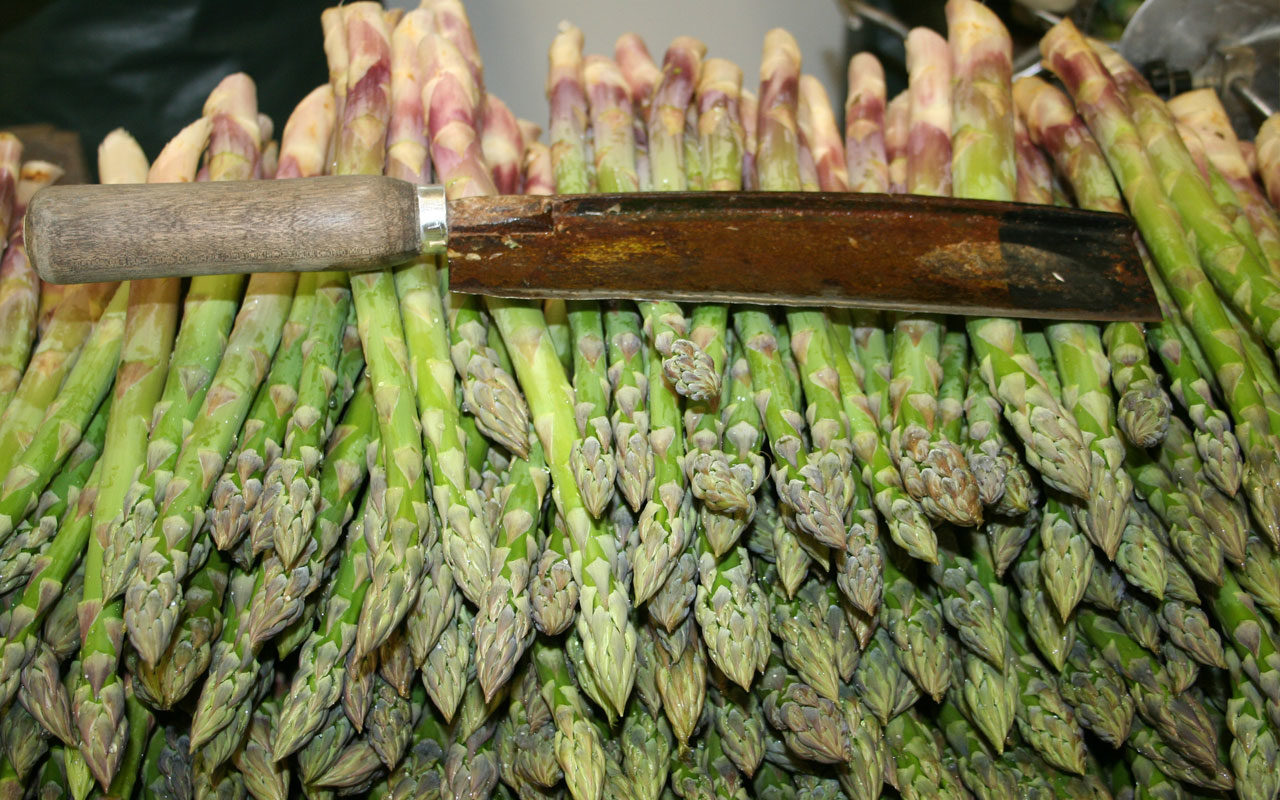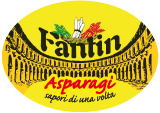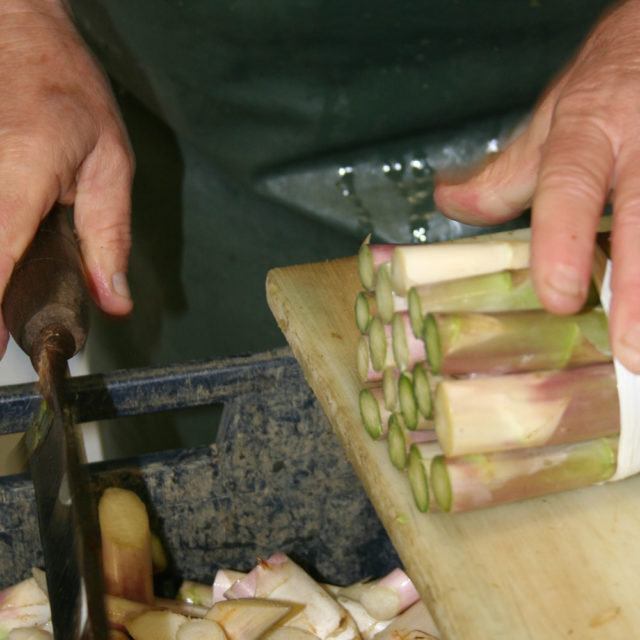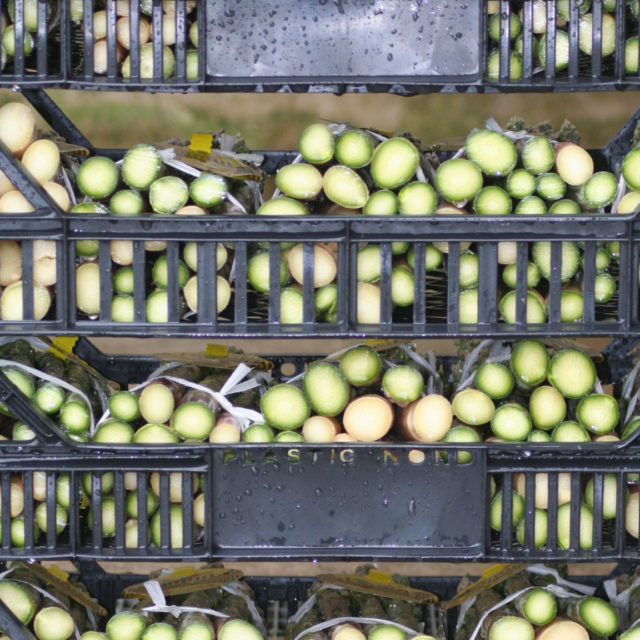
Of all vegetables, asparagus is the one that requires almost entirely manual processing and the use of tools borrowed from our grandparents, and great-grandparents, by now. Technology is used for some stages of processing (as in the case of grading), but it never takes over. In fact, it is the handwork that guarantees the quality of the product.
The most striking example, after sorting and bundling, concerns the cutting of the shoots – the edible part of the asparagus, the one we put in the pot and eat, to be clear. It is important that the cut is clean and there is no jagging or fraying, to preserve the shoot from dehydration.
Over the years we have consolidated the use on the farm of the sickle bar, which is a part of the falsin blade, a tool used in past centuries to mow the grass.
The falsin has only remained in vogue with a few elderly farmers who use it to keep ditches or headlands clean where machines cannot pass. The blade has its end removed and a wooden handle applied. It is necessary to hammer repeatedly on the edge of the blade to flatten it as much as possible and make it sharp: a painstaking art known to the old farmers.








